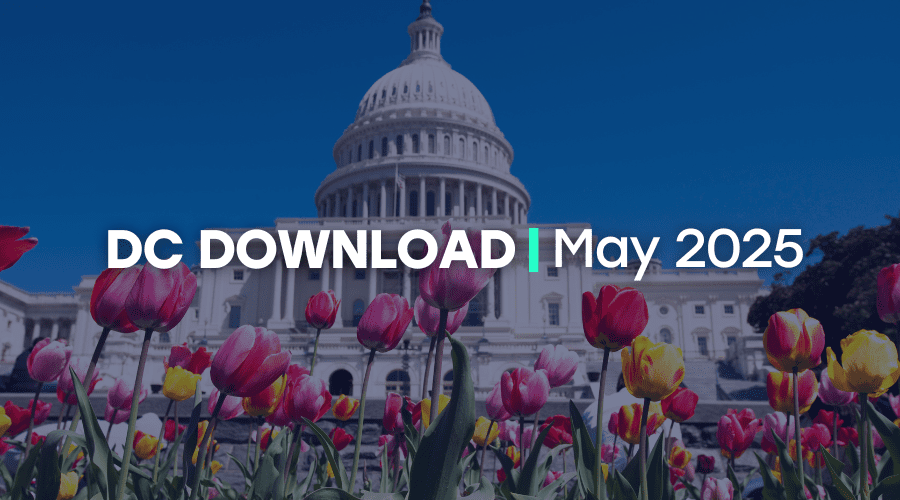In case you haven’t been watching commercials, driving around your neighborhood, or checking your mailbox or inbox, there was recently an election. If you did miss it, we’ve got the information you’re in search of right here. While many have and will continue to argue how big the “blue” wave was or wasn’t, the one that cannot be ignored is the wave of voters. This election saw record voter registration and turnout at both state and national levels.
The Buildup
We’ve been talking a lot about registration and voting recently, especially leading up to National Voter Registration Day. Previously, the record for highest participation on National Voter Registration Day was about 771,321 new registrations during the 2016 Presidential election. This year, National Voter Registration Day brought in over 865,000 new registrations, in a midterm, no less. While it’s important to note that voter turnout in Presidential and midterm elections is difficult to compare, it is important to note this significant increase in registration during an election without presidential candidates on the ballot. But as we all know, someone who is registered is not guaranteed to vote.
The Impact
According to Vox, while 25 states appear to have crossed the 50 percent turnout mark, five states even surpassed the 60 percent mark: Minnesota (64.3 percent), Colorado (62.7 percent), Montana (62.1 percent), Oregon (61.5 percent), and Wisconsin (61.2 percent). Both Colorado and Oregon have mail-in voting. Some states had voter turnout that was a 20-year high.
For the country overall, midterm turnout was even greater with a 50-year high. In fact, approximately 116 votes (and counting) were cast in the U.S. House races in 2018, compared to 83 million in 2014. This translates into almost half of all Americans turning out to vote. As of November 19, the US Elections Project showed 2018 turnout at 49.4%. We would need to go back to 1914, over 100 years ago, to find a higher midterm turnout rate. Final counts may take a while to come in, as early and absentee ballots are still arriving, and provisional ballots are still being processed.
An estimated 36 million people voted early compared to 27.2 million in 2014. According to Michael McDonald, a University of Florida professor who tracks voter turnout, early voters in three states – Texas, Nevada and Arizona – have surpassed total turnout in the most recent midterm election. A breakdown by state can be found on ElectProject.org for 2018. Some are projecting that early voting in every state could exceed its 2014 totals, while others are speculating that overall totals could surpass 40 million. 37 states plus the District of Columbia allow those registered to vote early.
The Who
Rock the Vote’s early estimates signal that this could be the highest turnout for 18- to 29-year-olds since the voting age was set at 18 in 1971. More specifically, college-age voters are reported to have voted at record levels, according to Inside HigherEd. Data from The Center for Information and Research on Civic Learning and Engagement (CIRCLE) at Tufts University, projected that about 31 percent of young people age 18 to 29 voted in this election cycle, which is about 10 percentage points higher than in 2014.
VotoLatino, an organization whose mission is to help register and get out the vote for the Latinx community, reported that young people and Latinos voted twice as high than in 2014.
The Reason(s) – Why/How
It is important to note that there were countless people who were unable to vote for a variety of reasons. There are many reasons that people don’t vote, and it’s often because they can’t. Several states have laws that prevent those with criminal backgrounds from registering to vote; employees aren’t always given enough time off to vote; and there are policy decisions, like prohibiting early/absentee voting or moving polling places within days of the election, that make it harder for some communities to vote. Other public policies, like voter ID laws, also may prevent citizens from voting, including older adults or people experiencing homelessness who may not have drivers licenses. Despite these barriers, many communities still saw surges at the polls, including Native/Indigenous populations.
There are proposals to solve the “time off” barrier, and they span from requiring employers to give time off to vote – which varies across the country, to making the current Election Day – which falls on a Tuesday – a federal holiday, or even moving Election Day to a weekend. These efforts have been gaining more traction in recent years.
There also are groups who are helping residents obtain IDs, such as Spread the Vote, while others focus on defending the right to vote, such as the Election Protection coalition.
Looking Forward
While this election cycle had a lot of new and existing barriers to voting, there were also instances of barriers being torn down. In Florida, voters decided to restore voting rights for those who has previously been convicted of felonies. Policymakers themselves are also paying more attention to voting, with recently announced plans to bring back a House subcommittee on elections.
Whether the credit goes to Taylor Swift, the Parkland students, or the nonprofit sector, one thing was clear this year: Voting isn’t just an important part of our democracy, it’s becoming the popular thing to do.
How to Help
This month’s record voting turnout is the product of years of effort, sustained in large part by a variety of nonprofit organizations across the country. Even though the 2018 election is in the rearview mirror, there still is a lot of work to do and voters need your organization’s help. Check out some of these active discussions about how we vote and when in future elections:



